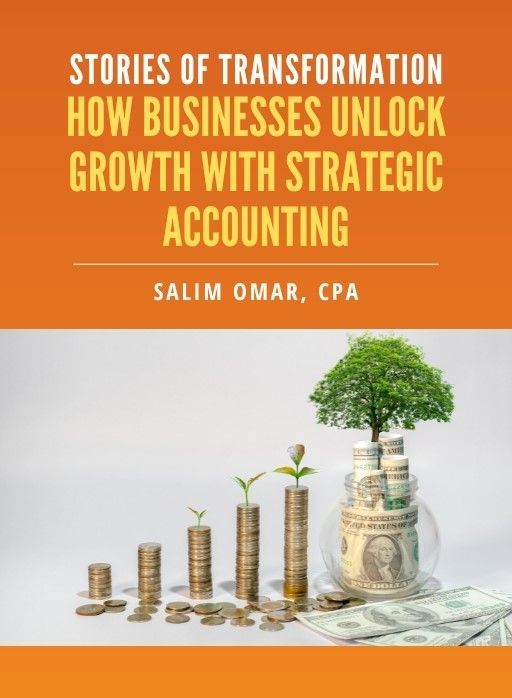The Smart S-Corp Owner’s Guide to Tax-Efficient Compensation
Most S-Corp owners know the IRS rule: pay yourself a “reasonable salary.” But what’s reasonable? Too high, and you drown in payroll taxes. Too low, and you invite an IRS audit. Striking the balance isn’t just compliance—it’s a strategy that determines how much of your hard-earned profit stays in your pocket.
At Straight Talk CPAs, we help business owners structure compensation that protects profits, satisfies IRS standards, and keeps cash flow strong. The right mix of salary and distributions isn’t guesswork—it’s a playbook.
Why Compensation Strategy Matters for
S-Corps
S-Corps offer a unique advantage: you can split income between salary (subject to payroll taxes) and distributions (not subject to FICA). But many owners miss the leverage by treating payroll like a checkbox instead of a tool.
Here’s what goes wrong when owners don’t plan:
- Paying all income as salary →
Overpaying thousands in payroll taxes.
- Taking all income as distributions →
Red flags and potential penalties.
- Ignoring timing → Missing deductions or hurting cash flow.
The sweet spot is designing compensation that’s IRS-compliant
and tax-efficient.
Key Plays for Tax-Efficient S-Corp Compensation
1. Define a “Reasonable Salary” the Right Way
The IRS looks at your role, industry norms, and comparable pay data. Don’t guess—benchmark it.
- Document job duties, hours worked, and comparable wages.
- Use industry databases to set a defensible salary.
- Keep payroll records updated in case of an IRS review.
Client Move:
A digital agency owner earning $250,000 in revenue documented a $90,000 salary based on industry standards. Result: compliance locked in, $25,000 saved in payroll taxes by shifting the rest to distributions.
2. Split Compensation Between Salary and Distributions
Once your salary is set, distributions become your tax lever.
- Pay yourself a base salary that’s IRS-safe.
- Take additional income as distributions, lowering FICA exposure.
- Revisit the split annually as revenue changes.
Pro Tip:
Don’t set it once and forget it—rebalancing each year ensures you’re optimizing.
3. Time Bonuses and Owner Draws Strategically
Timing can mean thousands in tax savings.
- Accelerate bonuses into the current year to lock in deductions.
- Delay distributions to smooth income across tax brackets.
- Use draws for cash flow needs but align with quarterly tax estimates.
Client Move: An S-Corp construction firm delayed $60,000 in distributions until January. This shift dropped them into a lower bracket and cut $8,400 in tax liability.
4. Leverage Retirement Contributions Through Payroll
Salary doesn’t just trigger taxes—it also enables retirement savings.
- Use 401(k) or SEP IRA contributions to reduce taxable income.
- Layer on profit-sharing contributions tied to payroll.
- Max out catch-up contributions if you’re over 50.
These contributions create a double benefit: lower current taxes + long-term wealth building.
5. Audit Compensation with Mid-Year Reviews
Too many owners wait until filing season. Smart ones review compensation mid-year.
- Adjust salaries if revenue jumps.
- Shift draws or bonuses before December 31st.
- Update documentation to stay audit-proof.
This proactive step ensures your compensation strategy adapts with your business.
Case Study: Balancing Salary and Distributions Right
A family-owned design firm structured the owner’s compensation as $85,000 salary and $120,000 distributions. With a mid-year review, they added a $20,000 retirement contribution through payroll.
Net result: $31,000 in combined tax savings and a stronger retirement fund—without raising audit risk.
The Straight Talk Difference: Compliance + Cash Flow
Most firms focus only on “reasonable salary” compliance. At Straight Talk CPAs, we go further:
- Benchmark salaries against industry data.
- Strategize distributions to maximize take-home pay.
- Integrate payroll, tax planning, and retirement into one coordinated system.
The outcome? Compliance is handled, profits are protected, and cash flow stays predictable.
Final Word
S-Corp compensation isn’t just about following rules—it’s about leveraging the rules to your advantage. The right mix of salary, distributions, and timing transforms compliance into a profit strategy.
With
Straight Talk CPAs, you get more than payroll processing—you get a compensation playbook that keeps you IRS-safe and cash-rich.
Free eBook:
Stories of Transformation


Salim is a straight-talking CPA with 30+ years of entrepreneurial and accounting experience. His professional background includes experience as a former Chief Financial Officer and, for the last twenty-five years, as a serial 7-Figure entrepreneur.





